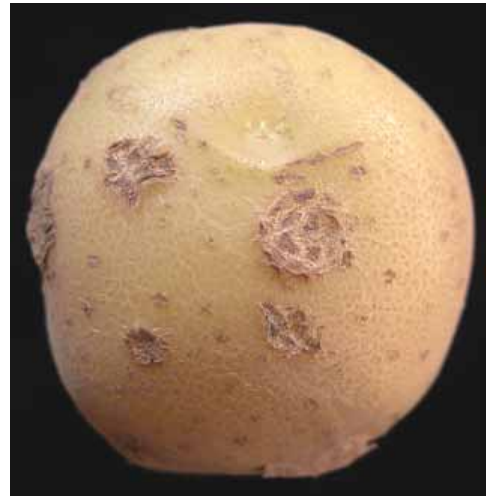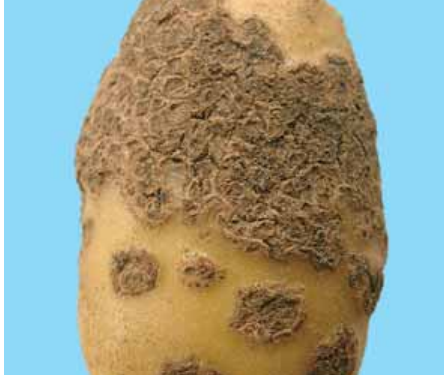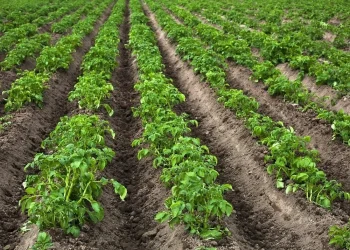Pathogen. The scab bacterium is a common soil inhabitant that survives for long periods of time, even in the absence of potatoes. The strains of the bacterium that
cause common scab produce a toxin called thaxtomin that enables the bacterium to cause lesions on tubers.
Planting scab-infected seed or spreading contaminated cattle manure will introduce the bacterium to scab-free fields. Tubers that look healthy may carry the bacterium on their skin. A soil pH from 5.5 to 7.5 is favourable for common scab development. The acid-tolerant scab species (S. acidiscabies) can infect tubers in soils with pH as low as 5.
Disease development. Most scab infections take place at tuber initiation. The bacterium enters newly forming tubers through immature lenticels. As tubers increase in
size, lesions expand and scab severity increases.
Scab lesions are quite variable. The type of lesion— superficial, pitted or erumpent—is probably determined by variety tolerance, aggressiveness of the bacterium
strain, time of infection and environmental conditions.
The incidence and severity of scab varies from year to year and from field to field. Warm, dry soils favour scab development.

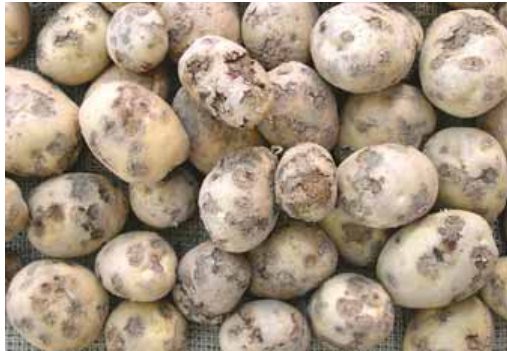
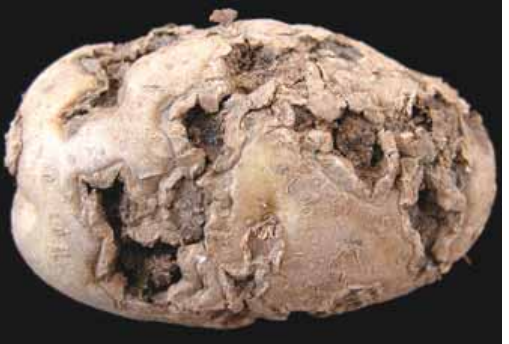

deep as 1 cm. This is called pitted scab. The
tissue around the interior of the pith is corky
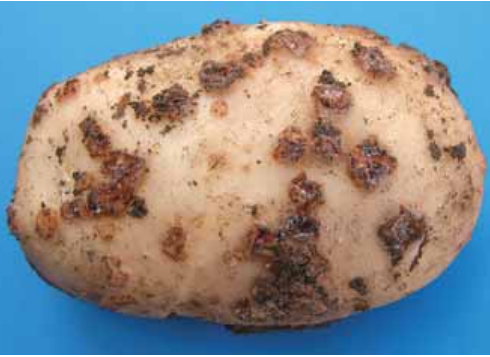

underlying superficial tissue is followed by the
formation of a corky layer.

called erumpent scab. Lesions are of variable
size and shape. The spots may be few and
scattered or may cover most of the surface.

whitish layer of spores may be present on
scab lesions.
